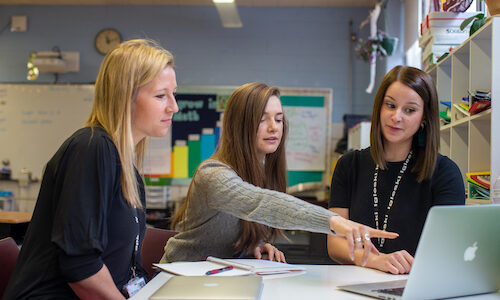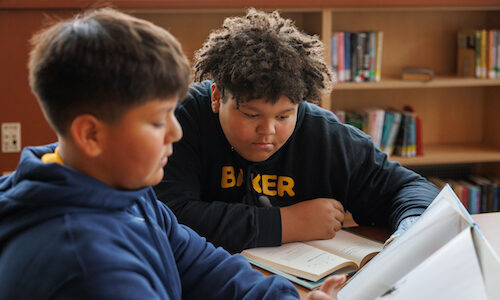
Every July, I’m reminded of the Tour de France because my husband is somewhat obsessed. He wakes up early to tune in. He finds coffee shops and bars that also invest in the nearly month-long adventure of watching, listening, and waiting to see which team—which person—will tackle one of the most challenging and controversial bike races in the world. The tour often overlaps with, or comes close to overlapping with, the anniversary of the Americans with Disabilities Act (ADA). Equity for Americans with disabilities is a topic I get somewhat obsessed about.
July 26, 2023, marks the 33rd anniversary of the ADA. This civil rights act is essential in protecting people with disabilities from discrimination in the workplace. According to the World Health Organization, there were more than one billion people in the world with a disability in 2011. For educators, that means there are children with disabilities in their classroom every school year, whether they realize it or not.
My husband’s affinity for the tour got me thinking about the ADA differently. As we start to prepare for the coming school year, here are three things the Tour de France can teach us about including students with disabilities.
1. “Une équipe,” or “one team”
Upholding the Americans with Disabilities Act and having equitable practices in our schools takes teamwork.
In the Tour de France, teams of eight riders compete against each other. One member of each team serves as a leader, and the others do everything they can to help him win. These team members, called “les équipiers,” support each other by removing barriers and allowing for the leader to save energy in a long event.
The more we understand the needs of our students, their families, and our colleagues, the more we can empower anyone with a disability to lead. Learn more about how you can do that. Attend technology conferences, such as the CSUN Assistive Technology Conference, or free events, such as Microsoft’s Ability Summit (videos of their 2022 gathering are available online). Check out CAST and learn how to implement Universal Design for Learning (UDL)in your classroom.
What makes “les équipiers” in the Tour de France great is their ability to remove barriers, share a common goal, and see the potential of their teammate. We can do the same in our schools.
2. “Les étapes” or “the stages”
Remember how the Tour de France runs through most of July? The cyclists are able to compete for that long because the race is done in stages, one stage per day.
Changing a school culture takes time, and some of the work will need to be done in stages. One example of a stage needed for including people with disabilities more is breaking down barriers with technology.
Once we know what stage we’re on, it’s important to remember that we must be thinking about accessibility from the moment we first have an idea about any change we want to make. This can help us remove barriers for people with disabilities but also allow us to be more innovative.
When thinking about technology in your school, for example, it helps to actively inquire about its accessibility. Did you know that Microsoft has included an option in Word documents that reads text aloud? Does the word processing software your school uses have a similar feature, or are children with disabilities being left out?
Like with the Tour de France, improving accessibility in your school will come in stages. Some will be as challenging as the six mountain stages the riders face, and others will be as easy as two days of rest. Don’t give up.
3.“Le parcours” or “the route”
The Tour de France has cyclists follow a different route every year, but the athletes always finish in the same place: Paris.
How can you improve accessibility in your classroom, school, or district? There are several routes you can take, depending on your role, but the destination is always the same: equity.
One route you can choose if you’re a teacher is to focus on improving accessibility. Incorporate those UDL Guidelines I mentioned earlier into classroom and lesson plans. Removing simple barriers, such as unnecessary color use, and providing alternative formats and ensuring access to materials with assistive technology can make a huge difference.
If you’re a leader, know that training and awareness are hugely important. Educating your staff is another route to take in your journey toward increasing inclusion and belonging. Another route you can take is to launch disability networks for students and staff. Creating safe and compassionate spaces where people can share common interests, express their feelings, and offer each other support can help individuals with disabilities feel included and also raise awareness throughout a school.
No easy feat
While our ride to inclusivity does not include cobble roads, time trials, and the Alps, improving equity and ensuring accessibility at times can feel as hard as competing in the Tour de France. I encourage you to think about how your metaphorical challenge and the actual race are similar. There’s wisdom to be gained from that annual bicycle challenge.
Yes, there will be some steep mountains for you to climb. But being able to celebrate more than three decades of the Americans with Disabilities Act makes the work worth it. Join me in celebrating the ADA and its importance to our students.







